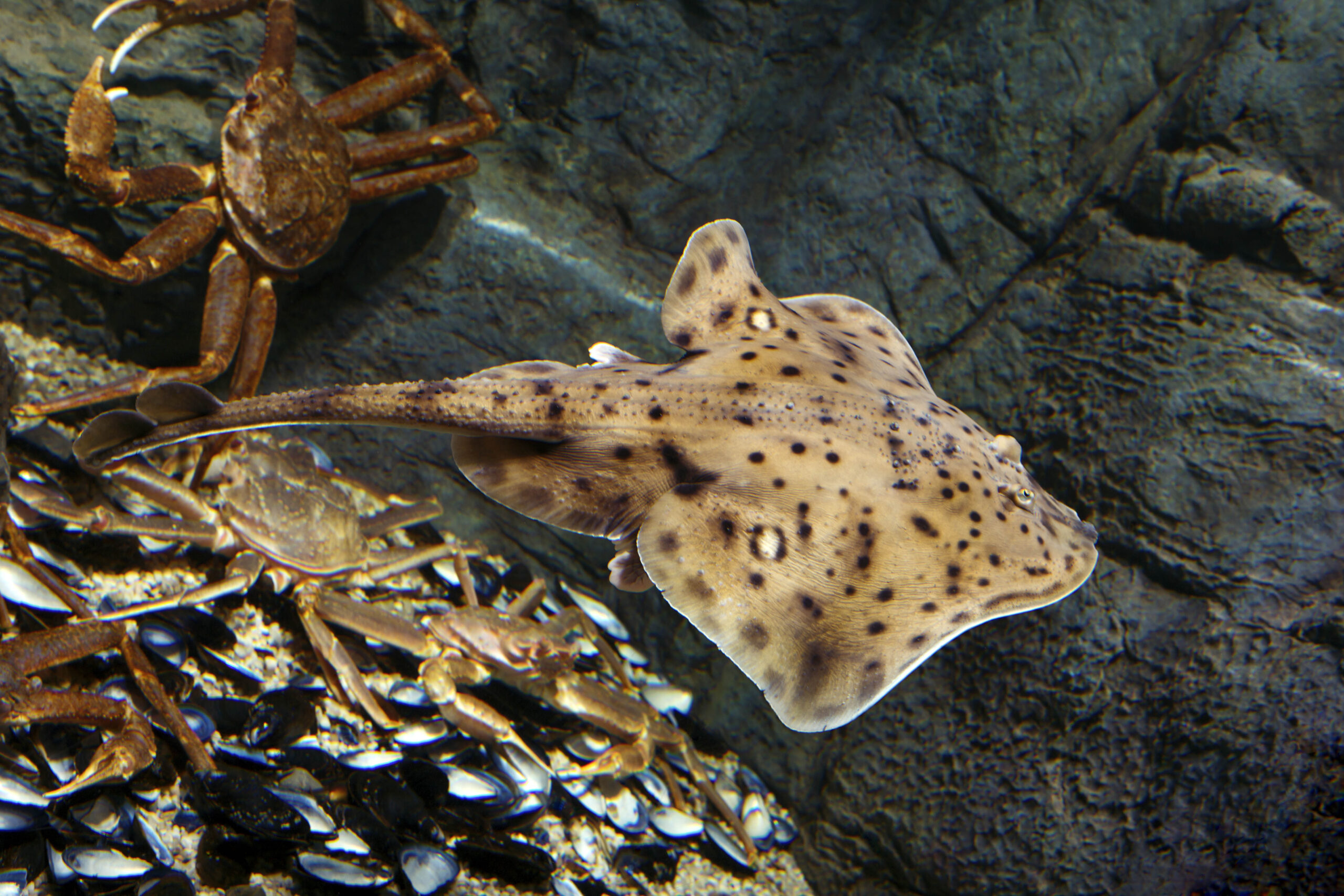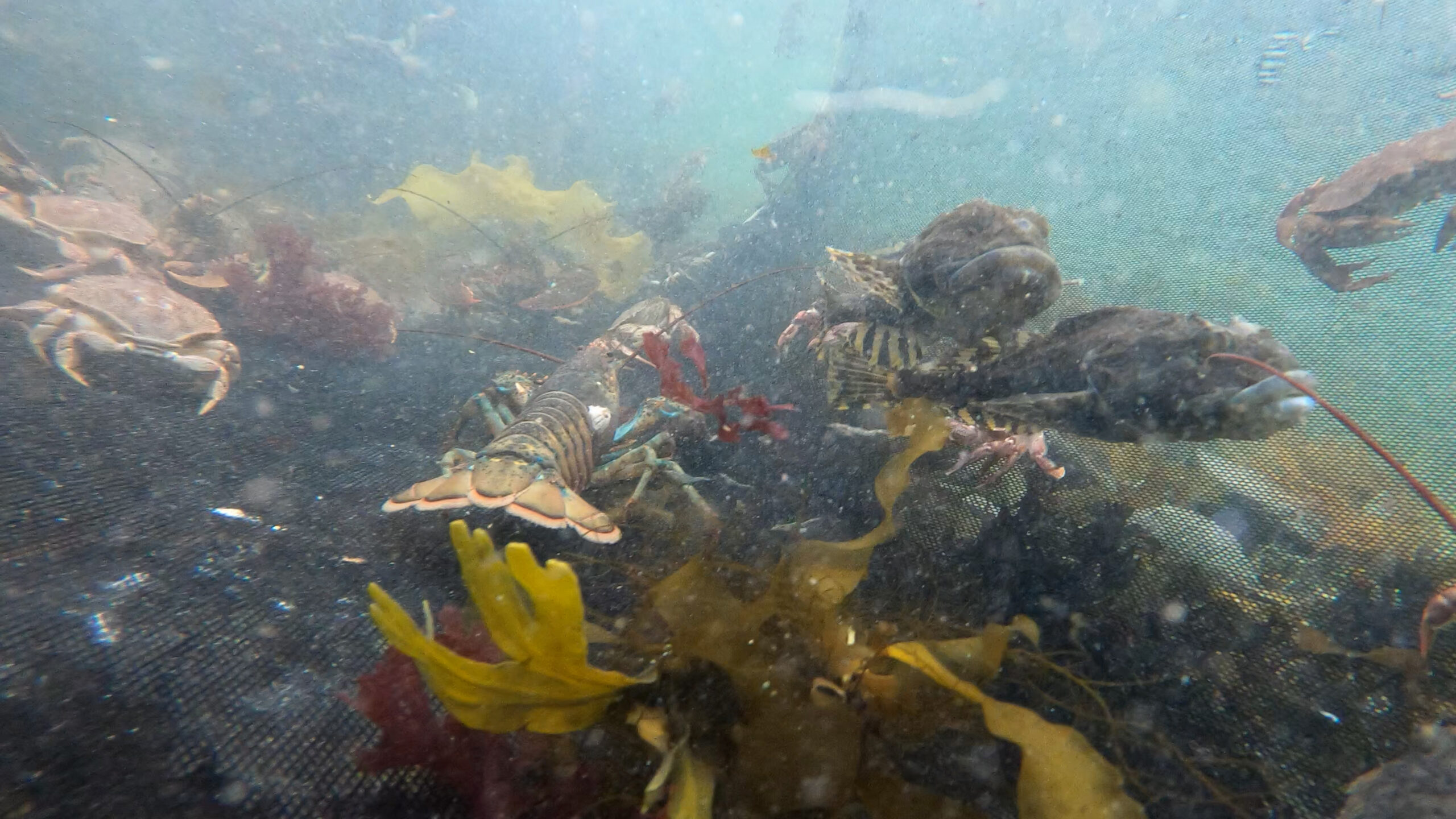
SIZE:
Up to 109 cm.
LIFE EXPECTANCY:
Up to 30 years.
LIFE CYCLE:
Sexual maturity occurs between 11 and 13 years of age.
Males
are equipped with erectile hooks, which are used during mating to transfer sperm. After fertilization, females can produce up to 52 eggs a year. The eggs are brown-green and rectangular and are called egg capsules. They are about 8 cm long and have long, horny spikes at the four corners. The incubation period can last up to 22 months. Newborns resemble adults and measure between 11.2 and 12.7 cm.
Researchers believe that reproduction may occur throughout the year, with peaks in summer and autumn.

Winter skates have their reproductive organs on their ventral side.
Credit: Robert Baronet, photo taken in Exploramer’s aquariums, 2010.
The winter skate has a flat diamond-shaped body, a long, thin tail and a rounded snout. Its back is rough with spines that decrease in number with age. It is pale to dark brown with small round spots and one to four white spots bordered in black. The ventral side is whitish with irregular beige markings.
On the bottom, usually at depths shallower than 110 m but can reach depths greater than 700 m.
The winter skate prefers a sandy or gravelly sea bottom and water temperatures between −1.2 and 15 °C.

A winter skate usually stands on the sea bottom; but it is not graceful when it swims?
Credit: Robert Baronet, photo taken in Exploramer’s aquariums, 2010.
PREYS:
Squid
Polychaetes
Sand lances
Crustaceans
PREDATORS:
Barndoor skates
Grey seals
Sharks
No commercial fishing; incidental catch (dredging and trawling).
REGULATIONS:
Fishing for winter skate is banned in Canada. Unfortunately, it is an incidental catch in trawl, dredge and longline fishing.
BENEFITS:
Winter skate is rich in protein, vitamin B12 and selenium. It is low in fat.
LET’S COOK:
The pectoral fins are known as “skate wings.” White, delicate and lean, the flesh requires only a short cooking time, offering an exceptional texture that is delicate yet firm. The wings can be pan-fried, poached or baked. They have a fine, slightly sweet flavour.
OUR CULINARY ADVICE:
- Because of its endangered status, it is not recommended to consume winter skate.





